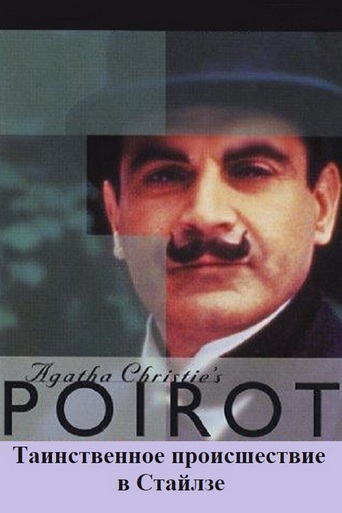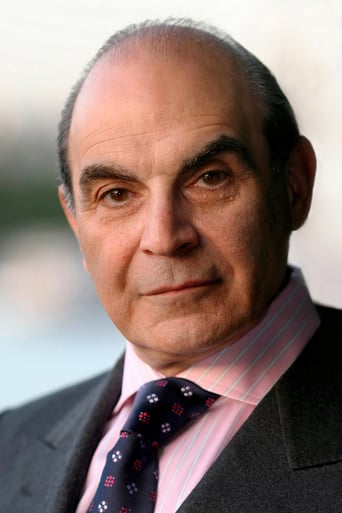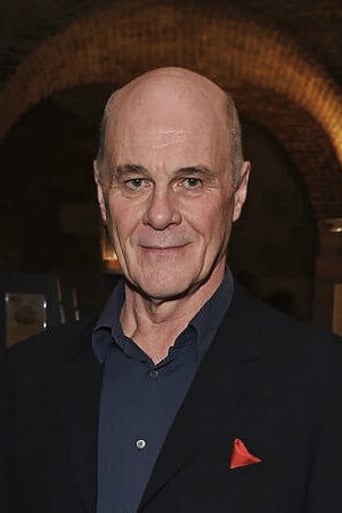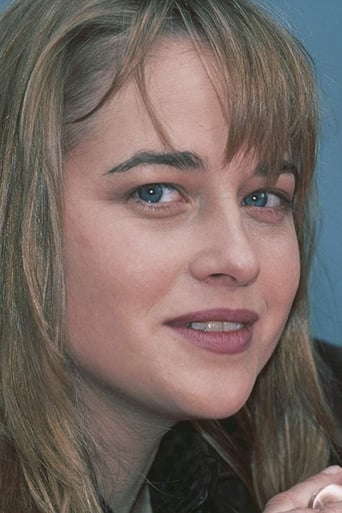An elderly woman dies in pain and confusion on a hot night during World War I. A member of her family may be responsible.


Reviews
While recovering from injuries received during the War, Lieutenant Hastings is invited to visit an old friend in his mother's, Mrs. Inglethorp, country estate. The household is in a state because of the mother's recent marriage to a strange man 20 years her junior. One night, Mrs. Inglethorp is taken ill and dies. The cause of death - poisoning. The family suspects the new husband, but he wasn't at home on the night of the murder. Looking for help in solving the mystery, Lieutenant Hastings calls on a war refugee from Belgium living in the village. He's an odd bird, but a great detective named Hercule Poirot.The Mysterious Affair at Styles isn't one of the great Christie works, but it's fun enough with interesting characters and a "nice" murder. I say it's not great because there are two things that really bug me (at least in this presentation of the story). First, the murderer makes the most illogical mistake imaginable. Why did he leave the incriminating piece of evidence where it could be found? Second, Poirot makes an awful lot of suppositions that just happen to be right. He's more clairvoyant here than usual.But none of that matters much when the rest of the episode is so good and fun. It's a real hoot watching Poirot march his fellow Belgian refugees through the streets of a small English village. They look like penguins on parade. It's also a treat to see Hastings and Poirot renew an old friendship. It's a really nice moment. And, it's also a joy to watch Japp and Poirot working together on their first English case. The only thing missing was Miss Lemon. I only wish they would have filmed The Mysterious Affair at Styles first. It would have nicely set-up everything to follow. For someone new to the series, I'd suggest going straight to S3E1 to start. Overall, a 7/10 from me.
"The Mysterious Affair at Styles" marks Poirot's first mystery. Interestingly, Poirot's first and last cases take place at Styles.Here he reconnects with a friend, Captain Hastings, whom he has not seen in some time. Hastings is recovering from an injury he received during World War I. He is staying in a mansion that has been conscripted as a hospital.In the beginning, we see Hastings and other patients watching the newsreels which shows Belgian refugees arriving in England. This is how Poirot first came to England.Hastings has an old friend who invites him to his place, Styles Court. He confides in Hastings that his mother has married a younger man, Alfred Inglethorp. The whole family believes that he is a golddigger.Not long after that, Emily Inglethorp is murdered by strychnine. Hastings appeals to Poirot to investigate. Inglethorp is the obvious suspect, but are things as they seem? This is a beautifully made episode that displays the era with perfection. The story has a couple of holes, but Poirot's deductions are excellent, and even if you know the denouement, you will be intrigued by the way it unfolds.David Suchet is the best Poirot - fastidious, cheerfully egomaniacal, and eccentric. Delightful episode.
Unlike the other episodes I've seen, this one is set during the Great War, after one of the battles at Ypres. (Kids, that's pronounced EEP-rah. Well, kind of. The Great War ran its course from 1914 to 1918 -- AD -- and was fought before we learned to start numbering them. The result of the battle was a pile of dead and mangled bodies on both sides. PS: The English were fighting the Germans.) It's surprising to see characters waltzing around in wardrobe a la mode 1915. Many of the ladies had long flowing dresses that swept the floor when they walked. They wore high lace collars and often their hair was swept up on their heads in a configuration resembling that of a soccer ball or some kind of Gugelhupf.The costumes, cars, and many props are of the period. Some props must have been carried over from the episodes set in the 1930s -- books and knick knacks -- but the producers must have dug deep to come up with so much new in the way of forms. I'd always thought of the BBC's Poirot productions as having some kind of massive chest of 1930s objects into which they dug for props and clothes. Now I have to add a massive chest for their period romances and even for their adaptations of Dickens. They had to put the 1935 bus away in the garage and dust off the 1914 model, for instance.I'd like to add that wardrobe and props tend to be precise about these things. I had a prominent role in "The Road To Wellville." You can see the back of my head in the scene in which the kid farts in church. That scene was set in 1895. Another scene was set ten years later, and they had different sets of SHOES for the extras, depending on the date.As far as this movie is concerned, I rather enjoyed it. True, I got some of the characters and their names mixed up. I usually do. These ensemble mysteries could actually benefit from the use of familiar faces, as Albert Finney' "Murder on the Orient Express" did. However, Poirot's climactic explanation and the dénouement wrapped things up nicely. There isn't really a dull moment.
The Mysterious Affair at Styles, published in 1920, is a historic novel in 2 ways: It launched the literary career of the 'Queen of Crime'-Agatha Christie and it introduced to the world the greatest fictional detective after the legendary Sherlock Holmes, Hercule Poirot. Beyond its historical significance and the fact that it was obviously well-written with a well-constructed plot, the novel is not really considered remarkable when you stack it up against some of Christie's far superior and far more famous works published over the next several decades (The Murder of Roger Ackroyd, Murder on the Orient Express, Death on the Nile, A Murder is Announced, And Then There Were None stand out as some exceptional works), but nevertheless, it certainly deserved an adaptation of some sort which is precisely what Granada did for the centenary of Christie's birth year...STYLES tells the story of how the Belgian sleuth, Hercule Poirot(David Suchet), who is a refugee from his native land during the First World War, ends up being invited by his old English friend, Arthur Hastings (Hugh Fraser) to investigate the murder of a wealthy old woman, Mrs Inglethorp, who died under mysterious circumstances in her country house, Styles Court, in the middle of the night. Poirot puts his detective skills to good use, investigating the scene of the crime, interviewing suspects and witnesses, collecting evidence and ultimately using the little 'grey cells' of the brain to discover the hidden truths of the matter. There are certainly no shortage of suspects in this case: There is Mrs. Inglethorps eldest son to consider, not to mention his wife and younger brother; there is her protégée and of course her much younger second husband who is hated by the rest of the family. Clues are in abundance as well: a smashed coffee cup, a glass of cocoa, a burnt document, a piece of green thread... The differences between STYLES and other Poirot adaptations which Suchet acted in become apparent-there is the setting to consider; Poirot is no longer (or rather, hasn't yet reached) the Art Deco settings of 1930's London; his reputation is briefly hinted at but he still isn't considered the greatest and most famous detective of Europe; Hastings too is just getting used to the idea of playing the slow sidekick to a great mind. There are also certain differences derived from the fact that this is Christie's first novel, like the abundance of clues and tangible evidence, the vast number of red herrings (later Christie stories would have more subtle psychological elements), the excessive stereotyping of the characters etc. But all this shouldn't spoil your enjoyment of a well-directed and acted TV movie. A must watch for all Christie and Poirot fans!








